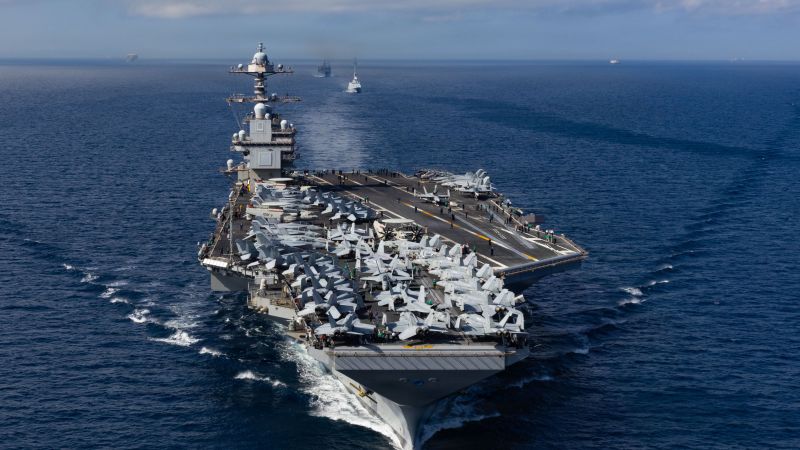The aircraft carrier USS Gerald R Ford has been deployed to the Caribbean as part of a strategic military move by the US Navy, coinciding with increased pressure on Venezuela over allegations of drug trafficking. This deployment signals a significant commitment to U.S. operations in the region, where military assets are being enhanced as geopolitical tensions rise.
Overview of the USS Gerald R Ford
Launched in 2017, the USS Gerald R Ford is touted as “the most capable, adaptable, and lethal combat platform in the world.” Displacing over 100,000 tons and measuring 1,100 feet (approximately 334 meters) in length, it stands as the largest warship ever constructed by the United States. This carrier is the first of a new class designed to succeed the Navy’s ten Nimitz-class carriers, with the oldest in that fleet set to retire next year.
With a crew of nearly 4,600, including its air wing, the Ford operates with about 20% fewer personnel compared to its predecessors. This reduction is attributed to advanced systems that enhance operational efficiency. The Ford is equipped with two classified nuclear reactors, generating three times the electrical power of those on Nimitz-class ships, according to the Navy. This capability allows the Ford to utilize the electromagnetic aircraft launch system (EMALS), which employs magnets instead of steam to launch aircraft. As a result, the Ford can deploy planes more quickly and with greater payloads.
Advanced Features and Capabilities
The carrier’s advanced technology extends to its 11 Advanced Weapons Elevators, which utilize electromagnetic motors for faster munitions transfer from the ship’s magazines to the flight deck. Additionally, the Ford features the Navy’s Advanced Arresting Gear, a digitally controlled system that enhances efficiency in recovering aircraft after landing, allowing for increased sortie rates and reduced energy consumption.
The Ford’s flight deck is designed to facilitate better aircraft movement, being approximately four feet wider than that of the Nimitz class. Its “island”—the structure above the flight deck—is smaller and positioned farther back, improving operational space.
At the heart of the Ford’s offensive capabilities are the F/A-18 fighter jets it carries. These twin-engine Boeing aircraft possess a combat range of 1,250 miles (around 2,011 kilometers) and can be armed with various munitions, including air-to-air, air-to-ground, and anti-ship missiles, along with laser-guided bombs. The carrier also accommodates electronic-jamming aircraft, airborne early warning and control planes, cargo and passenger aircraft, and helicopters. Notably, however, the Ford does not currently support the Navy’s newest stealth fighter, the F-35C, due to necessary modifications that are pending for a future maintenance period.
Although the Ford was commissioned in 2017, it faced challenges that delayed its deployment. It did not complete its first mission until 2022, as the Navy worked to resolve issues with its advanced systems. The carrier conducted its inaugural combat deployment in 2023, which included an eight-month mission in the eastern Mediterranean in response to the October 7 attack on Israel by Hamas.
The deployment of the USS Gerald R Ford to the Caribbean underscores the strategic importance of military readiness in addressing regional challenges, particularly concerning alleged illicit activities in Venezuela. As tensions continue to escalate, the presence of such advanced capabilities in the area signals a robust stance by the United States.






